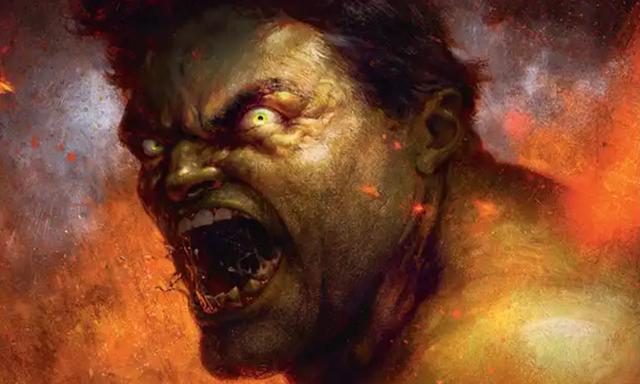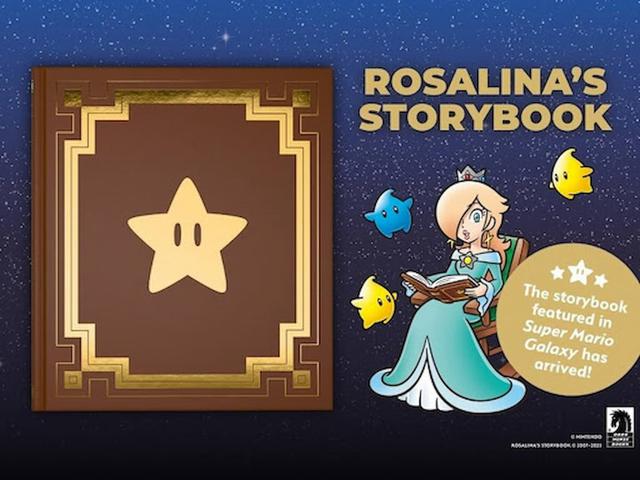If you click on a link and make a purchase we may receive a small commission. Read our editorial policy.
How LGBTQ+ stories have evolved and flourished in manga
An in-depth look at the history of LGBTQ+ manga

In the past few years, there has been a significant increase in the quality of Japanese manga with LGBTQ characters and themes. Not only have the manga moved beyond the simplistic schoolyard romances in yuri (girls love) and yaoi (boys’ love), but they have also evolved to feature sensitive depictions of gender identity and sexual orientation by a variety of mangaka (ie. manga creators). As a result, readers seeking comic books with LGBTQ content have turned to manga to satisfy their needs.
In order to understand how LGBTQ manga has evolved, let’s look at the history of yuri manga, yaoi manga, and manga with transgender characters and themes. Starting with yuri manga, one of the pioneering works of the subgenre is Yoshiya Nobuko’s Yaneura No Nishojo. Published in 1919, it is considered one of the first yuri novels to feature a lesbian couple with a happy ending. Thus, this novel is thought to be the start of the yuri genre by manga fans and scholars such as Erica Friedman.
Another manga that has been foundational to the yuri genre include Ozama Tezuka’s Princess Knight. It told the story of the character Sapphire, a princess with both a “girl’s heart” and a “boy’s heart” who fights evildoers disguised as the titular Princess Knight. Originally serialized in 1953, it is considered by the creator and others to be one of the first shoujo manga titles aimed at female readers.

Meanwhile, the roots of the yaoi genre would be planted in the '60s with the publication of two foundational works: Mari Mori’s 1961 novel Lover’s Forest and Hideko Mizuno’s shoujo manga series Fire!. The former told the story of a 38-year-old professor and his younger lover, while the latter told the story of a rockstar named Aaron as he navigates the ups and downs of stardom. Both Lover’s Forest and Fire are notable for representing the tonal shift in manga that represented mature topics such as violence, sex, and drugs.
During the '70s, a group of female mangaka that became known as the Magnificent Forty-Niners would revitalize shoujo manga. One of the most well known ones is Riyoko Ikeda, creator of the tragic French Revolution inspired manga Rose of Versailles. Published in 1972, its lead Oscar François de Jarjayes displays Princess Knight influences due to being a woman raised as a man by her father in order to become head of the Palace Guards.
In addition to creating Rose of Versailles, Riyoko Ikeda also made another manga titled Claudine. Originally published in 1978, this single volume manga is a tragic story about a transgender man named Claude living in the 20th century. It is considered to be one of the earliest manga to feature a transgender protagonist.
While the comic would end in tragedy for the characters, it laid the groundwork for future yaoi works.Another mangaka considered part of the Forty-Niners is Keiko Takemiya, who created the yaoi story In The Sunroom. Published in 1970 in the shoujo magazine Bessatsu Shoujo Comic, the comic would be the first shoujo comic to feature a kiss between two male characters. While the comic would end in tragedy for the characters, it laid the groundwork for future yaoi works.
In addition to works by the Forty-Niners, the social and political activism of lesbians in the '70s would also be the roots for yuri manga. In fact, the term 'yuri', has its origins in the first formal lesbian community known as Wakakusa no Kai (Fresh Green Club) and Japan’s first commercial gay magazine Barazoku. Both were established in 1971, and the latter would expand in 1976 to include a page for lesbians called 'Yurizoku no Heya' which means the 'Lily Tribe’s Room'. This is where the term 'yuri' would get its name from, both definition wise and symbolically.
In contrast, the term 'yaoi' was coined in the '80s by self-published Japanese fanzine writers Yasuko Sakata and Akiko Hatsu. Yaoi was abbreviated from the phrase 'Yama nashi, ochi nashi, imi nashi', which means 'no climax, no punch line, no meaning'. Additionally, the yaoi fanzines became known as doujinshi and began to be distributed via conventions such as Comiket in 1975. In the late '80s, the manga Patalliro would be one of the first yaoi manga to receive an anime adaptation.

By the '90s, manga was undergoing a contemporary renaissance with female and male creators that include gay, lesbian, and transgender characters and themes. Some of the most notable include Haruka Tenou and Michiru Kaiou from Naoko Takeuchi’s Sailor Moon, Utena and Anthy from Kunihiko Ikuhara’s Revolutionary Girl Utena, and Isabella from Ai Yazawa’s Paradise Kiss. These manga not only continue some of the shoujo, yuri, and and yaoi themes in the aforementioned works, but also improve them for the better.
For instance Haruka Tenou, is a character that evokes the 'girl-prince' character archetype established by Princess Knight. Not only is she in a romantic relationship with another woman named Michiru Kaiou, but she also has a gender presentation that involves wearing both male and female clothing. Not only is she seen as 'male' to some and 'female' to others, but she is eventually explained to be “both a man and a woman, with the strength of both.” As a result, she has been interpreted by fans in many ways, from being a butch lesbian to being gender fluid.
In particular, Isabella from Paradise Kiss is a trans female secondary character who doesn’t suffer any tragedy whatsoever. Instead, she is one of the members of a group of a fashion design label known as Paradise Kiss and is also a mother figure to the main character Yukari and the other characters. Until the early '00s, she would also be one of the few contemporary trans characters with a sensitive portrayal.
In 2003, Takako Shimura’s manga Wandering Son was serialized and told the story of a transgender girl named Shuichi Nitori forming a friendship with a transgender boy Yoshino Takatsuki. Although the series discusses gender identity and being trans in a thoughtful manner for trans female readers, some readers were disappointed by how things ended for its trans male character. The latter was especially sad for some because trans male characters were hard to find outside of metaphorical representations or reader interpretations.
A hundred years after the debut of the first yuri novel and twenty years after the publication of Wandering Son, LGBTQ+ manga has greatly matured in terms of their creators, content, and its subgenres. When it comes to manga with transgender characters and themes, there are more options than ever before. One manga is Keito Gaku’s Boys Run The Riot, which is about a teenaged trans male fashion designer. Not only is it written and drawn by a trans male manga creator, but the English version was translated by a trans localization team. Another manga that is by a trans female manga creator is the autobiographical book The Bride Was A Boy by Chii. Featuring cute artwork and insightful facts about transgender rights in Japan, the book tells the story of the creator’s life as she comes to terms with her gender identity while falling in love and getting married.

On the yuri and yaoi side of manga, both subgenres have moved beyond the teenaged schoolyard romances that were present at the genre’s inception. There are not only gay and lesbian manga featuring adult main characters, but also manga in different fictional genres. For instance, Dr. Pepperco’s Goodbye My Rose Garden is a historical fiction yuri series with adult leads. Set in the 18th century, the series focuses on a bookish Japanese maid named Hanako falling in love with the bookish English noblewoman Alice. There is also the single volume yaoi story Chéri, My Destiny!, which tells the story of a French pastry chef who falls in love with a Japanese pastry chef.
In addition to these manga, there are also manga that discuss gender identity, sexual orientation, and the ups and downs of coming of age and adulthood. A manga series that exemplifies this is Yuki Kamatani’s Our Dreams At Dusk, which tells the story of Tasuku, a gay teenaged boy who finds support in a group of LGBTQ people at a drop-in center. Not only is the series by an X-gender (i.e. non-binary) manga creator, but each book in the four volume series focuses on specific LGBTQ characters of different ages and identities. For instance, the third volume in the series centers an adult trans man named Utsumi and a questioning teenager named Tsubaki.
When you consider the variety of LGBTQ manga available today, it is no wonder that American comic book readers who want LGBTQ characters and themes have turned to Japanese manga.
When you consider the variety of LGBTQ manga available today, it is no wonder that American comic book readers who want LGBTQ characters and themes have turned to Japanese manga. According to an article from Publisher’s Weekly, one of the major reasons that manga is selling so well in the United States is diverse stories. In particular, manga companies such as Kodansha Comics and Seven Seas Entertainment have published all of the aforementioned manga in English.
From its beginnings in novels and tragic manga to its triumphant boom today, LGBTQ manga is more inclusive and popular than ever before. Not only are some of the manga made by Japanese LGBTQ creators, but they now appeal to a wider audience with characters of different ages as well as settings ranging from contesmporary to historical. There has never been a better time to read LGBTQ manga, especially since it has further room to grow.
Interested in reading more queer comics? Check out Popverse's guide to queer comics that don't feature superheroes.
Follow Popverse for upcoming event coverage and news
Find out how we conduct our review by reading our review policy
Let Popverse be your tour guide through the wilderness of pop culture
Sign in and let us help you find your new favorite thing.
















Comments
Want to join the discussion? Please activate your account first.
Visit Reedpop ID if you need to resend the confirmation email.